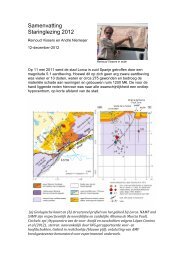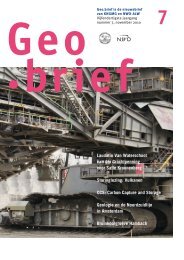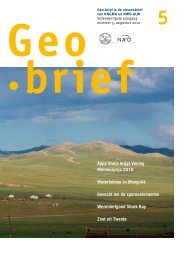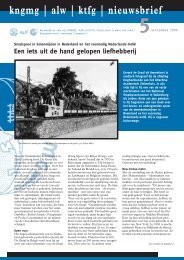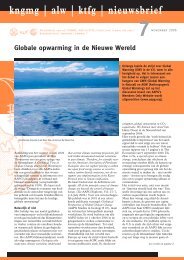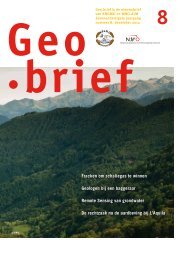Create successful ePaper yourself
Turn your PDF publications into a flip-book with our unique Google optimized e-Paper software.
.promotie<br />
The Archaeology of<br />
British Prospecting and<br />
Mining on Spitsbergen<br />
Tijdens het International Polar Year (IPY)) is een onderzoek gestart naar exploratie en ertswinning op<br />
Spitsbergen, het Lashipa-project: een boeiende combinatie van recente ‘archeologie’ en mijnbouw.<br />
I could never choose between archaeology<br />
and geology. Luckily, I never had to.<br />
I graduated from Glasgow University in<br />
Scotland with a custom-made degree in<br />
Archaeology and Geology before the word<br />
geoarchaeology even came into fashion.<br />
Thereafter, I completed a Master dissertation<br />
in Bournemouth in Southern<br />
England on geophysical prospecting in<br />
forensic archaeology. I used forensics<br />
only once during the years I worked in<br />
a dual role as engineering geologist and<br />
commercial archaeologist for a site investigation<br />
firm in Newcastle-upon-Tyne in<br />
North East England. At the time, we were<br />
about to sink boreholes into a development<br />
site, when a local remembered<br />
some ‘tunnels’ beneath the surface.<br />
These turned out to be an abandoned<br />
crypt. Never a boring minute at work,<br />
I was not really looking for a change in<br />
scenery. However, the description of a<br />
PhD in the Netherlands sounded only<br />
too tempting.<br />
Fit and able<br />
The requirements read ‘must be physically<br />
fit and able to handle a gun’. The project<br />
would blend industrial archaeology and<br />
mining geology in an Arctic environment.<br />
I was sold. So in June 2008, I began my<br />
doctoral research at the Arctic Centre at<br />
Groningen University. I had signed up to<br />
investigate British prospecting, mining,<br />
and geopolitics on Spitsbergen between<br />
8 Geo.brief december 2010<br />
1904 and 1953. In the first quarter of the<br />
twentieth century, Spitsbergen was a no<br />
man’s land and had experienced an international<br />
coal rush. The political status<br />
was settled, when the Spitsbergen Treaty<br />
was ratified in 1925, establishing Norwegian<br />
authority, and the interest in mineral<br />
resources dwindled with advancing eco-<br />
Frigga Kruse during fieldwork at Camp Zoe in 2008.<br />
nomic depression. With my research,<br />
I hope to explain what motivations lay<br />
behind the British presence on the Arctic<br />
archipelago; how four different prospecting<br />
and mining companies conducted<br />
their operations and whether they were<br />
successful; and what impact the companies<br />
had on the geopolitical situation at<br />
Photo’s: Dag Avango



